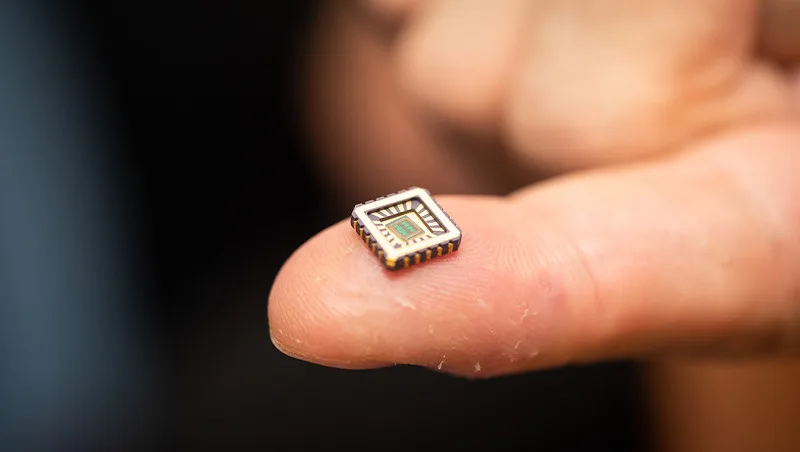Artificial neurons on silicon chips represent a groundbreaking fusion of neuroscience and technology, offering the potential to revolutionize how we approach computing and artificial intelligence. This technology mimics the behavior of biological neurons, allowing for more advanced processing capabilities and opening doors to innovative applications across various industries.
What is Artificial Neuron Technology, and When Did It Appear?
Artificial neuron technology, often referred to as neuromorphic engineering, has its roots in the late 20th century, when researchers began exploring ways to replicate the functioning of the human brain on silicon chips. The concept gained traction in the 1980s and 1990s, with significant advancements occurring over the past two decades. The idea was to create circuits that could emulate the neural architecture of the brain, leading to more efficient and powerful computational models.
The first practical implementations of artificial neurons on silicon chips appeared in the early 2000s, driven by the need for more sophisticated computational methods in fields such as artificial intelligence, robotics, and neuroscience. These developments were fueled by a better understanding of how the brain processes information and by advances in semiconductor technology, which allowed for the miniaturization and integration of complex neural networks onto chips.
How Does Artificial Neuron Technology Work?
The working principle behind artificial neurons on silicon chips is based on mimicking the electrical activity of biological neurons. In the human brain, neurons communicate through synapses, where electrical impulses trigger chemical reactions that transmit signals from one neuron to another. Artificial neurons replicate this process using electronic components, such as transistors, capacitors, and resistors, to simulate the synaptic activity found in biological systems.
Each artificial neuron on a silicon chip functions as part of a larger network, with connections that can be adjusted or “trained” over time, similar to how the human brain learns and adapts. These networks, known as artificial neural networks (ANNs), are capable of processing complex data, recognizing patterns, and making decisions based on input. The ability to simulate and manipulate these networks on silicon chips has led to significant breakthroughs in machine learning, enabling more efficient data processing and decision-making capabilities.
Current Applications of Artificial Neuron Technology
Artificial neuron technology is already being utilized in various fields, demonstrating its potential to transform industries. In healthcare, for example, neuromorphic chips are being used to develop advanced prosthetics that can interact more naturally with the human nervous system, providing better control and feedback for users. These chips are also being explored for their potential in diagnosing and treating neurological disorders by simulating brain functions and studying disease progression.
In the realm of artificial intelligence, artificial neurons on silicon chips are driving advancements in machine learning algorithms, allowing for more sophisticated AI systems that can learn and adapt over time. This technology is also finding applications in robotics, where it enables the development of robots that can perform complex tasks autonomously by processing sensory data in real time.
Moreover, artificial neuron technology is making strides in the automotive industry, particularly in the development of autonomous vehicles. By integrating neuromorphic chips, these vehicles can process vast amounts of data from their surroundings, enabling safer and more reliable decision-making on the road.
Potential Future Uses of Artificial Neuron Technology
The future applications of artificial neuron technology are vast and varied, with the potential to impact numerous sectors. One promising area is in the development of brain-machine interfaces (BMIs), which could allow for direct communication between the human brain and external devices. This technology could revolutionize how we interact with computers, enabling new forms of human-computer interaction that are faster and more intuitive.
In the field of cybersecurity, artificial neurons on silicon chips could be used to create more advanced security systems that can detect and respond to threats in real time. By mimicking the brain’s ability to recognize patterns and anomalies, these systems could provide a more robust defense against cyberattacks, protecting sensitive data and infrastructure.
Another exciting prospect is the use of artificial neuron technology in environmental monitoring. By deploying neuromorphic sensors in various ecosystems, researchers could collect and process data on environmental changes more efficiently, leading to better-informed decisions on conservation and sustainability efforts.
In addition, artificial neurons could play a crucial role in enhancing the capabilities of quantum computing. By integrating neuromorphic chips with quantum processors, it may be possible to overcome some of the current limitations of quantum computers, such as error correction and data handling, paving the way for more powerful and practical quantum systems.

The Promising Future of Artificial Neuron Technology
The potential of artificial neuron technology is immense, with many experts predicting that it will become a cornerstone of future technological advancements. As research continues to evolve, we can expect to see even more innovative applications of this technology, particularly in areas that require high levels of computational power and adaptability.
One of the most promising aspects of artificial neuron technology is its ability to bridge the gap between biological and artificial systems. By emulating the brain’s natural processes, neuromorphic chips could lead to the development of more human-like AI, capable of understanding and responding to complex human emotions and behaviors. This could have profound implications for fields such as mental health, where AI could be used to provide personalized therapy and support.
Moreover, as the technology becomes more refined and accessible, it could lead to the democratization of advanced computing capabilities, making it possible for smaller organizations and individuals to harness the power of artificial neurons in their projects. This could spur innovation across a wide range of disciplines, from creative industries to scientific research, and ultimately contribute to a more technologically empowered society.
Overall, the future of artificial neuron technology looks bright, with endless possibilities for its application in improving both our understanding of the brain and our ability to create smarter, more responsive machines. As this technology continues to mature, it is likely to play a key role in shaping the next generation of computing and AI.

